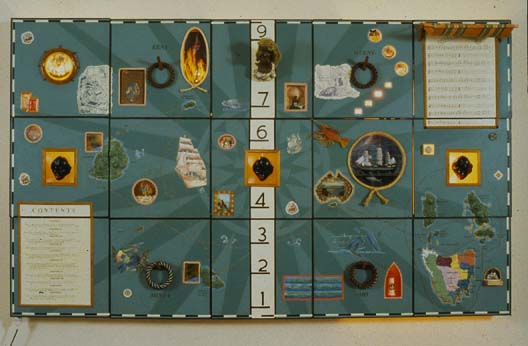|
Click on image below to return to Julie Gough's Artworks and Stories. Scroll down or click here to read more about this work. Brown Sugar developed
from the realisation that knowing a complete and unabridged version
of the past is an impossibility. Notions of journeying and discovery
provided the structure for the piece and allowed for a mirroring thematic
axis to exist in this work. This fluctuation is between the unplanned
lives and chance encounters of the adventurers (which the story revolves
around) and the similar accidental nature determining which facts
and names will be retained for the future - which stories become History. Differing perspectives
between the historical record and my own notions (at this stage) of
my ancestor's journey, resulted in a work that suggests an unfinished
puzzle - which the viewer can interact with and visualise on a personal
level. In Brown Sugar
the elements are the physical, intuitive acts of collection and placement
of familiar objects which blur, modify and question the initial archival
research process of a factual-historical event; familiar object versus
the cognitive word. The use of Aboriginal
kitsch female face-plaques within the work is intended to evoke uncomfortable
interaction. Twenty calico demerara-sugar filled bags are intended
to be thrown by the viewer through the port-holes, whilst old rope
quoits are provided to throw onto protruding dowels. Chance as a major
factor of life informs and links the work both in its physical game
structure and data-based areas, where sea-shanties provide as much
information as diaries and maps. (Return to Artworks and Stories.) |
